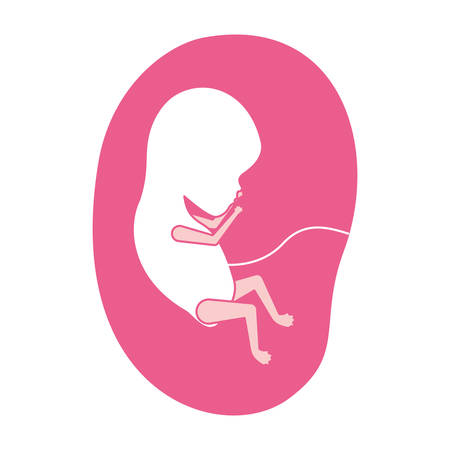1. Understanding the Signs of Choking
Knowing how to recognize the signs of choking can help you react quickly and potentially save a life. Choking happens when an object blocks the airway, making it difficult or impossible to breathe. Its important to distinguish between mild and severe choking so you can respond appropriately.
Mild vs. Severe Choking
Not all choking incidents require the same response. Here’s how to tell the difference between mild and severe choking:
| Type | Signs | What to Do |
|---|---|---|
| Mild Choking | Coughing, gagging, ability to make sounds or talk, watery eyes | Encourage coughing and stay close in case it worsens. |
| Severe Choking | Inability to breathe or speak, silent or weak coughs, blue lips or skin, clutching throat (universal choking sign) | Act immediately with back blows and abdominal thrusts. |
Common Choking Hazards
Certain foods and small objects are common causes of choking, especially for young children. Here are some high-risk items:
- Foods: Grapes, hot dogs, popcorn, nuts, hard candy, chunks of meat or cheese
- Small Objects: Coins, buttons, marbles, pen caps, small toy parts
- Household Items: Balloons, batteries, bottle caps
When to Take Action
If someone is mildly choking but still able to cough forcefully, let them try to clear their airway on their own. However, if they show signs of severe choking—such as being unable to speak or turning blue—you must step in immediately.
Recognizing these warning signs early can make all the difference in a choking emergency. The next step is knowing exactly what actions to take when every second counts.
2. Staying Calm Under Pressure
In a choking emergency, staying calm is just as important as knowing what to do. When panic takes over, it can be harder to think clearly and take the right actions. Here are some practical techniques to help you stay composed and respond effectively.
Focus on Your Breathing
Deep breathing can help reduce anxiety and keep your mind clear. Try this simple technique:
- Take a slow, deep breath in through your nose for four seconds.
- Hold the breath for four seconds.
- Exhale slowly through your mouth for four seconds.
- Repeat until you feel more in control.
Use a Mental Checklist
Having a mental checklist ensures you don’t freeze under pressure. Follow these steps:
| Step | What to Do |
|---|---|
| Assess the Situation | Check if the person is coughing or completely unable to breathe. |
| Stay Calm | Take a deep breath and remind yourself that you know what to do. |
| Call for Help | If necessary, instruct someone nearby to call 911. |
| Perform First Aid | Follow proper choking response techniques such as back blows or abdominal thrusts. |
| Monitor the Person | Even after they recover, ensure they get medical evaluation if needed. |
Avoid Emotional Overload
Panic can spread quickly. If youre helping a loved one, remind yourself that staying calm will help them too. Reassure the choking person with a steady voice and confident actions.
Practice Preparedness
The more familiar you are with emergency procedures, the easier it will be to stay calm. Consider taking a first aid class or practicing with family members so you feel ready if an emergency happens.
Your Calmness Can Save a Life
The ability to manage stress in an emergency makes all the difference. By practicing these techniques, youll be better equipped to take action quickly and effectively when it matters most.

3. Step-by-Step Response for Infants, Children, and Adults
When someone is choking, acting quickly and correctly can save their life. Follow these step-by-step instructions based on the person’s age.
Infants (Under 1 Year Old)
Back Blows and Chest Thrusts
- Sit down and hold the baby face-down on your forearm, supporting their head and neck with your hand.
- Rest your arm on your thigh for support.
- Give five firm back blows between the shoulder blades using the heel of your hand.
- If the object does not come out, turn the baby over onto their back while keeping their head lower than their chest.
- Place two fingers in the center of their chest, just below the nipple line, and give five quick chest thrusts.
- Repeat back blows and chest thrusts until the object is dislodged or the baby becomes unresponsive.
Children (Over 1 Year Old) and Adults
Abdominal Thrusts (Heimlich Maneuver)
- Stand behind the choking person and wrap your arms around their waist.
- Make a fist with one hand and place it just above their belly button.
- Grasp your fist with your other hand and give quick, inward, and upward thrusts.
- Continue thrusting until the object is expelled or the person becomes unconscious.
When to Call 911
If a choking person:
- Cannot breathe, cough, or make any sound
- Loses consciousness
- You are unable to remove the obstruction after repeated attempts
If they become unresponsive, begin CPR immediately while waiting for emergency responders to arrive.
4. What to Do After a Choking Incident
Once the choking episode is over and your child is breathing normally again, it’s important to monitor them closely. Even if they seem fine, there could still be underlying issues that require medical attention. Here’s what you should do next:
Monitor for Signs of Distress
After choking, your child may still experience discomfort or complications. Watch for these warning signs:
| Signs to Watch For | What It Could Mean |
|---|---|
| Persistent Coughing | The airway might still be irritated or partially blocked. |
| Wheezing or Noisy Breathing | This could indicate airway swelling or an unnoticed obstruction. |
| Difficult or Labored Breathing | Your child might not be getting enough oxygen, which requires immediate medical attention. |
| Lethargy or Unusual Drowsiness | A lack of oxygen during the choking incident could have affected them. |
| Pale or Bluish Skin | This is a serious sign that they are not getting enough oxygen and need emergency care. |
When to Seek Medical Attention
If the object was successfully removed and your child appears fine, you may not need emergency care. However, seek medical attention if:
- Your child continues coughing, wheezing, or struggling to breathe.
- You suspect part of the object is still stuck in their throat.
- Your child shows signs of distress such as excessive drooling or difficulty swallowing.
- The choking incident lasted long enough for them to turn blue or lose consciousness, even briefly.
Helping Your Child Recover
Your child may feel scared or upset after choking. Comfort them with calm reassurance and offer small sips of water once they are fully recovered. Avoid giving solid foods right away, and observe how they react before resuming normal meals.
If Youre Unsure, Call a Doctor
If you have any doubts about your child’s condition after a choking event, don’t hesitate to call your pediatrician. It’s always better to be cautious when it comes to their health and safety.
5. Preventing Future Choking Accidents
Preventing choking accidents starts with creating a safe environment and teaching children proper eating habits. By taking a few precautionary steps, you can significantly reduce the risk of choking incidents.
Safe Eating Habits
Teaching kids how to eat properly is one of the best ways to prevent choking. Here are some essential tips:
- Encourage slow eating: Teach children to take small bites and chew their food thoroughly before swallowing.
- Avoid distractions: Make sure kids sit down while eating and avoid running, playing, or talking with a full mouth.
- Supervise mealtime: Always keep an eye on young children while they eat.
- Cut food into small pieces: Slice foods like grapes, hot dogs, and cheese sticks into small, manageable pieces.
- Avoid high-risk foods: Keep hard candies, popcorn, whole nuts, and large chunks of raw vegetables away from toddlers.
Childproofing Your Home
Toddlers love to explore by putting things in their mouths. Childproofing your home helps minimize choking hazards. Here’s what you can do:
| Choking Hazard | How to Prevent It |
|---|---|
| Toys with small parts | Avoid toys with small detachable pieces for children under three years old. |
| Balloons | Keep deflated or broken balloons out of reach since they can block airways. |
| Coins and small objects | Regularly check floors and furniture for coins, buttons, batteries, and other tiny items. |
| Pill bottles | Store medications in childproof containers and keep them locked away. |
| Cords and strings | Avoid leaving long cords or necklaces within reach to prevent accidental swallowing. |
Teaching Kids How to Chew and Swallow Properly
You can help your child develop good eating habits by guiding them through the right techniques. Try these simple strategies:
- Demonstrate proper chewing: Show your child how to chew food thoroughly before swallowing.
- Create a calm mealtime environment: Avoid rushing during meals so kids don’t feel pressured to eat quickly.
- Mimic chewing exercises: Encourage toddlers to practice chewing soft foods first before introducing harder textures.
- Avoid force-feeding: Let children eat at their own pace rather than pushing them to finish quickly.
- Praise good eating behavior: Reinforce positive habits by praising your child when they chew properly.
By following these preventive measures, you can create a safer eating environment for your child and reduce the likelihood of future choking incidents.


